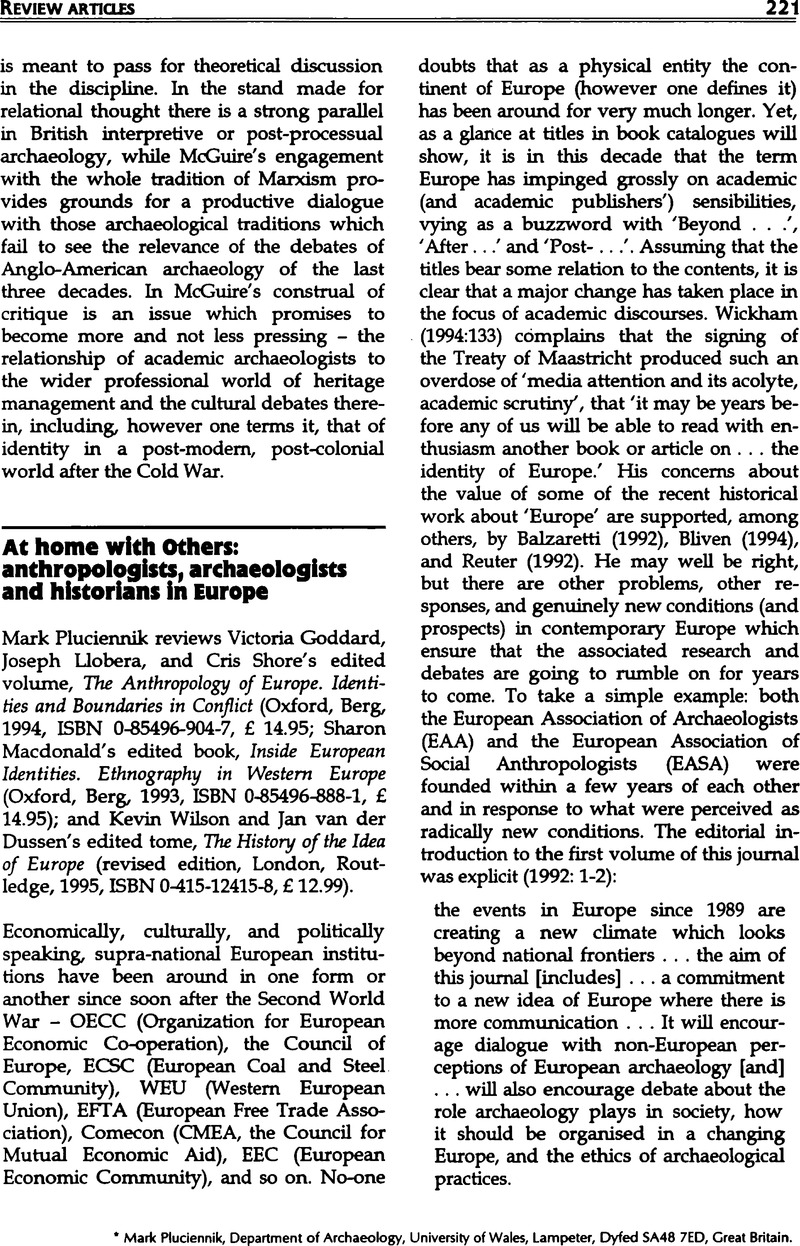No CrossRef data available.
Article contents
At Home with Others: Anthropologists, Archaeologists and Historians in Europe
Published online by Cambridge University Press: 27 January 2017
Abstract
An abstract is not available for this content so a preview has been provided. Please use the Get access link above for information on how to access this content.

- Type
- Review Section
- Information
- Copyright
- Copyright © European Association of Archaeologists
References
Bliven, Naomi, 1994. All together now: Europe. Journal of Interdisciplinary History
25: 273–280
CrossRefGoogle Scholar
Bloomfield, Jude, 1993. The New Europe: a new agenda for research? In Fulbrook, Mary (ed.), National histories and European history: 255–284. London: University College London Press.Google Scholar
Fulbrook, Mary, 1993. Introduction: States, nations and the development of Europe. In Fulbrook, Mary (ed.), National Histories and European History: 1–17. London: University College London Press.Google Scholar
Harris, David, 1994. Pathways to world prehistory. Presidential address 1994. Proceedings of the Prehistoric Society
60: 1–13.Google Scholar
Hodder, Ian, 1995. An interview with Dr. Ian Hodder, University of Cambridge. Papers from the Institute of Archaeology
6: 11–20.Google Scholar
Kofman, Eleonore, 1995. Citizenship for some but not for others: spaces of citizenship in contemporary Europe. Political Geography
14 (2): 121–137.CrossRefGoogle Scholar
Renfrew, A. Colin, 1987. Archaeology and Language: the puzzle of Indo-European origins. London: Cape.Google Scholar
Renfrew, A. Colin, 1992. Archaeology, genetics and linguistic diversity. Man 27: 445–478.CrossRefGoogle Scholar
Renfrew, A. Colin, 1994. The identity of Europe in prehistoric archaeology. Journal of European Archaeology
2.2:153–173.CrossRefGoogle Scholar
Reuter, Tim, 1992. Medieval ideas of Europe and their modern historians. History Workshop Journal
33: 176–180.Google Scholar
Rowlands, Michael, 1994. Why do we need a European Association of Archaeologists?
Journal of European Archaeology
2.2:175–178.CrossRefGoogle Scholar
Ruiz Zapatero, Gonzalo, 1994. Por una ‘Europa arqueológica’ unida?
Trabajos de Preistoria
51 (2): 191–193.Google Scholar
Shore, Cris, 1993. Inventing the ‘people's Europe': critical approaches to European Community ‘cultural policy’. Man
28: 779–800.CrossRefGoogle Scholar
Stolcke, Verena, 1995. Talking culture. New boundaries, new rhetorics of exclusion in Europe. Current Anthropology
36: 1–24.Google Scholar
Thränhardt, Dietrich, 1995. Germany: an undeclared immigration country. New Community
21 (1): 19–36.Google Scholar
Zvelebil, Marek, 1986. Mesolithic prelude and Neolithic revolution. In Zvelebil, Marek (ed.), Hunters in Transition: 5–15. Cambridge: Cambridge University Press.Google Scholar


